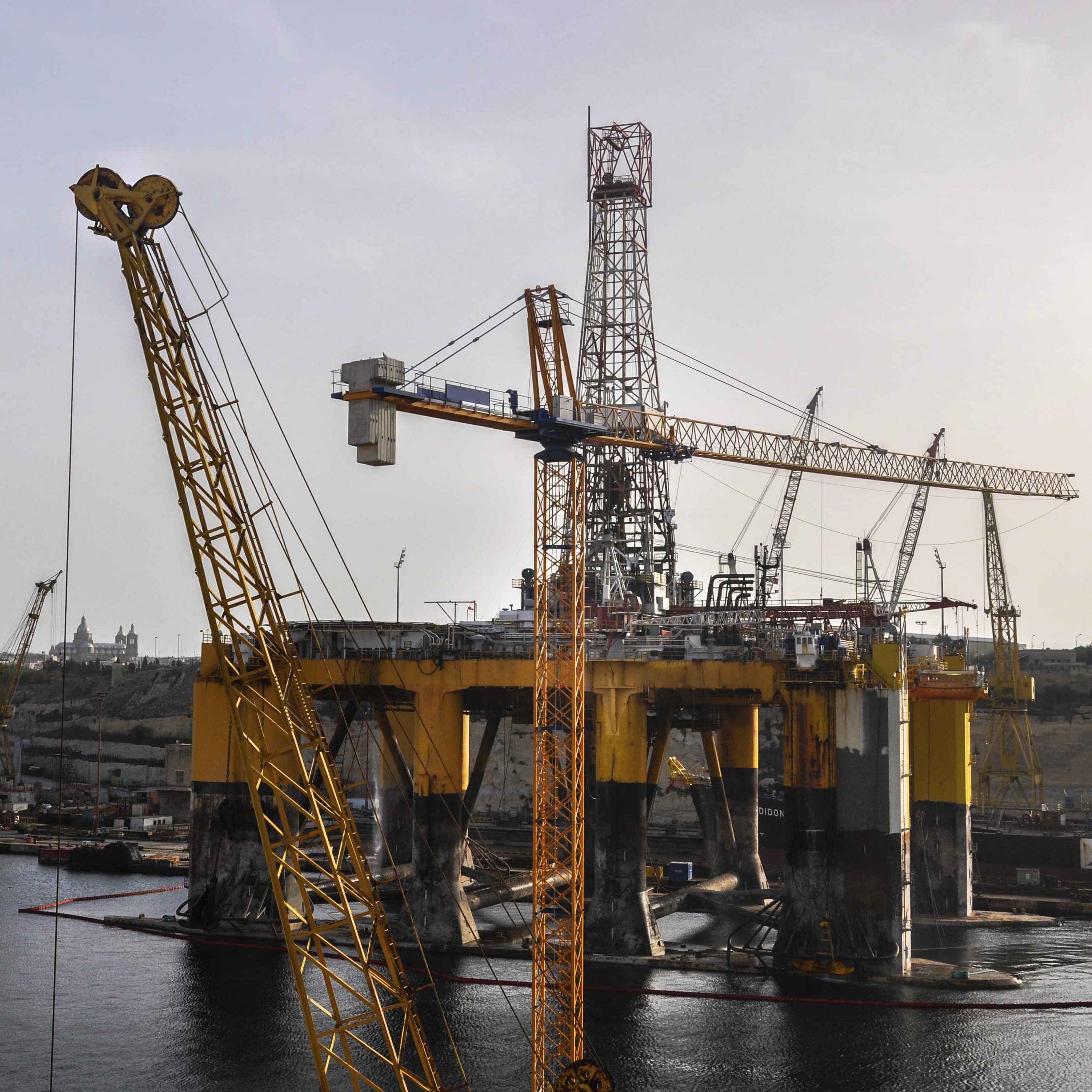Energy
The 2016 Bullish and Bearish Outlook for Exxon Mobil and Chevron

Published:
Last Updated:

Now that 2015 has ended, 24/7 Wall St. wanted to see what the strategists and analysts on Wall Street expect for the stock market in 2016. The bull market seems to have been interrupted in 2015 as the Dow Jones Industrial Average closed out the year at 17,425.03, down 2.2% last year. That may be hardly a reason to call a bear market ahead, but it comes after six straight years of gains.
Here we take a look at the two energy giants, Exxon Mobil Corp. (NYSE: XOM) and Chevron Corp. (NYSE: CVX), both of which had a rotten 2015. In fact, Chevron was one of the five worst performing Dow stocks of the year.
Exxon Mobil
While the index performance of the Dow does not account for individual stock dividends, Exxon closed out 2015 at $77.95, for a loss of 12.8%, including its dividend adjustments.
For the year ahead, the consensus analyst price target from Thomson Reuters is $83.52. If the analysts are correct, the expected total return for Exxon would be 11.2%, if you include its dividend yield of 3.75%.
As 2016 has gotten off to a very bumpy start, Exxon shares were trading at $77.12 after just a few days of trading.
The other bit of good news for investors is that Exxon buys back a lot of its own stock, further enhancing its ability to pay its dividend.
Exxon also gets a boost from its downstream refining and marketing business. Low prices for crude help increase refining margins. The effect is not close to offsetting the loss of revenues from production, but refining profits doubled to $2 billion in the third quarter, while production profits collapsed from $6.4 billion in the third quarter of 2014 to $1.36 billion.
Operationally, the outlook is far less rosy. The World Bank recently cut its global economic growth forecast from a prior forecast for 3.3% growth to just 2.9%. Among the largest emerging economies only India is expected to post more than a nominal increase in GDP during 2016.
There is no reason to believe that crude oil prices will rise much in 2016. As crude tumbles toward $30 a barrel, revenues will fall and so will profits. Exxon is in a better position than most to weather the storm for another year, but even a giant will feel the pain.
Chevron
Chevron, the other Dow 30 energy stock, ended last year at $88.96, a loss of 17%, including a dividend adjustment.
For the year ahead, the consensus price target is $99.55. If the analysts are correct, the expected total return for Chevron would be 17.2%, if you include its dividend yield of 4.76%.
Just a few trading days into the new year and we find Chevron shares at $84.85, as 2016 has gotten off to a very bumpy start.
In mid-December, Chevron announced that its capital budget for 2016 will decline by 24%, compared with the company’s expected 2015 capital spending. The company’s planned $26.6 billion in 2016 capex includes $4.5 billion in spending by affiliated companies. The majority ($18.6 billion) of Chevron’s capital spending is targeted for international upstream projects. U.S. upstream projects are expected to get $5.4 billion in capital support, and the company’s global downstream spending is targeted for $2.2 billion, of which $1.6 billion is expected to be spent on U.S. operations.
That cut will help support Chevron’s generous dividend payments. Like Exxon, protecting the dividend is near the top of Chevron’s priorities for 2016.
The not-so-good news for investors is that Chevron’s dividend payments for 2016 are higher than the analysts’ estimate of earnings per share. Making up that shortfall will entail selling some assets, cutting costs, dipping into cash reserves or borrowing.
Chevron also likely will feel more pain than Exxon from the decline in natural gas prices in Asia. Chevron has begun to produce liquefied natural gas (LNG) at two massive facilities in the southern hemisphere, just at the time when LNG prices have fallen from around $18 per million BTUs several years ago to nearer $4.50. That is still enough to make a profit, but not enough to offset low prices for crude oil.
The most investors should hope for from either company’s stock price in 2016 is a return to their levels at around the end of 2014. For Exxon, the dividend adjusted return of 11.2% nearly offsets the 12.8% decline in 2015. For Chevron a 17.2% return in 2016 is slightly better than the 17.0% decline in 2015.
Our summary: the two energy giants will take their cue from the Chicago Cubs: “Wait until next year.”
Start by taking a quick retirement quiz from SmartAsset that will match you with up to 3 financial advisors that serve your area and beyond in 5 minutes, or less.
Each advisor has been vetted by SmartAsset and is held to a fiduciary standard to act in your best interests.
Here’s how it works:
1. Answer SmartAsset advisor match quiz
2. Review your pre-screened matches at your leisure. Check out the advisors’ profiles.
3. Speak with advisors at no cost to you. Have an introductory call on the phone or introduction in person and choose whom to work with in the future
Have questions about retirement or personal finance? Email us at [email protected]!
By emailing your questions to 24/7 Wall St., you agree to have them published anonymously on a673b.bigscoots-temp.com.
By submitting your story, you understand and agree that we may use your story, or versions of it, in all media and platforms, including via third parties.
Thank you for reading! Have some feedback for us?
Contact the 24/7 Wall St. editorial team.